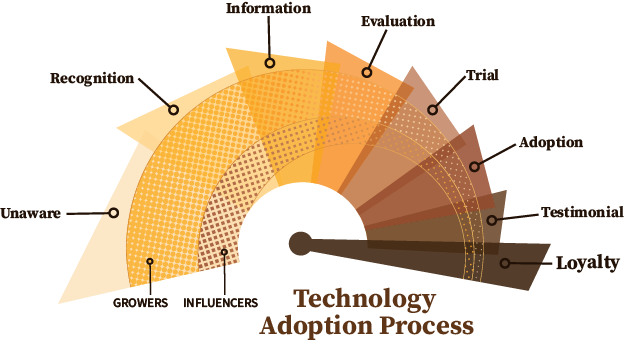Focus on the Development in the R&D efforts helps move technologies toward successful commercialization with consistency and efficiency. To prepare a new product for any market requires as much disciplined development process as it does science. To move into new markets with confidence and less risk, consider these recommendations from Gloverson Moro, CTO, AgriThority® .
- ROI is your goal, your investors’ goal, and every growers’ goal — delivering to all levels leads to successful commercialization. Underestimating the cost of goods sold or the value to the grower can cut profits at both ends.
- Manage and allocate limited resources — money and time. Even the largest multinational companies face resource allocation challenges. Resisting the urge to cut corners is paramount to avoid missteps or quality reductions. Identifying and maximizing internal strengths while accessing external expertise can accomplish timely results. This is not an exercise of “Good, Fast, and Cheap, choose two.” These three manageable elements of time, money, and quality must also consider the scope, impact on stakeholders, and user satisfaction for long-term success.
- Stay the course with focus and discipline — avoiding opportunistic diversions of more uses, more markets, or more targets can help companies stay on track within allocated resources. The first course of action is to generate revenue with a successful launch. The first market may not be the biggest opportunity, but the fastest or easiest to enter.
- Prove results with reliable and consistent data over many seasons and many locations. Structured protocols and disciplined analysis lay the foundation for best use practices on the farm.
- Differentiate benefits by application, crop, or geography. Meeting the needs may go beyond cost-effective or proven solutions; the needs may include ease of application or convenience, as well as quality and yield. The value proposition may vary by market segment. Defining the value should not be cost of goods plus margin, nor should the basis be replacement of current practices. Instead, price optimization is based on perceived value when benefits are clearly known and proven. Back to ROI!
 Define product positioning and fit into the on-farm cropping system. Will the new technology require changing common practices or misinformed perceptions? Analyzing markets and segmenting best uses will help focus on early adopters. Defining the true customer will help realize the fact that 20% of customers deliver 80% of profits.
Define product positioning and fit into the on-farm cropping system. Will the new technology require changing common practices or misinformed perceptions? Analyzing markets and segmenting best uses will help focus on early adopters. Defining the true customer will help realize the fact that 20% of customers deliver 80% of profits.- Engage and convince Key Opinion Leaders who can “unsell” the growers. Never underestimate the power of tradition and legacy. Change may seem good, but it is always difficult.
- Define efficient regulatory pathways with required testing for safety and label registration plus variable rules by state or country.
- Be flexible when considering options, alternative routes and timelines. Recognizing fluctuations in costs, competitive environments, and customer preferences will set the stage for timely adaptations to the plans. Reliance on internal staff for market intelligence often delivers insufficient or biased information. Precise, quantifiable, and reliable information is crucial at every step of development and launch.
- Understand the complexity of production agriculture — unknown environmental factors along with evolving competition and barriers to entry. The critical, complex variables that influence crop productivity and yield include local farming practices, the cropping system, inputs, and the ever-elusive environment.
When your agricultural technology is moving from Research into Development or into new markets, AgriThority has the technical expertise to supplement or expand your internal capabilities for scientific business, market and product expertise.
With internationally recognized leaders connected to more than 300 local specialists in a worldwide network, we bring deep experience testing more than 170 new technologies across 1500+ field trial locations for 180+ multi-national, mid-size and start-up companies.
Wherever you want to explore, we are your native guides.



